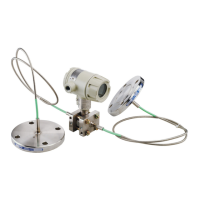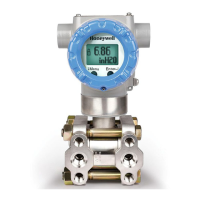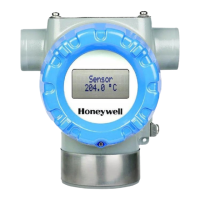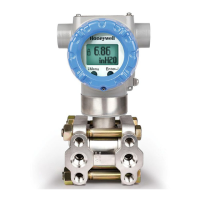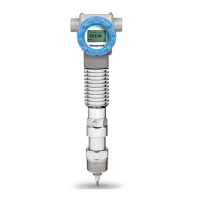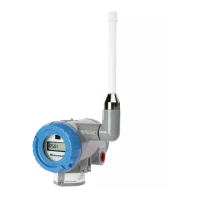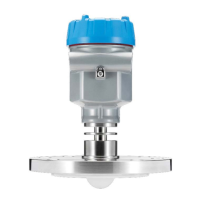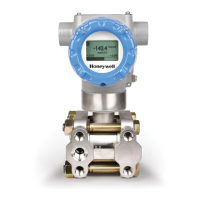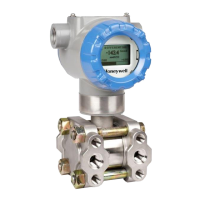34-SM-03-01
Page 2
SMV 3000 Sensor and Flow Transmitter Functions
Honeywell’s SMV 3000 Smart
Multivariable Flow Transmitter
extends our proven “smart”
technology to the measurement
of three separate process
variables simultaneously with the
ability to calculate compensated
mass or volume flow rate as a
fourth process variable according
to industry standard methods for
air, gases, steam and liquids. It
measures differential pressure
and absolute or gauge pressure
from a single sensor and
temperature from a standard 100-
ohm Resistance Temperature
Detector (RTD) or thermocouple
type E, J, K, or T input signals.
The SMV 3000’s flow calculation
may include compensation of
pressure and/or temperature as
well as more complex variables
such as viscosity, discharge
coefficient, thermal expansion
factor, velocity of approach factor
and gas expansion factor.
Proven Pressure Sensor
Technology with
characterization
The SMV 3000 utilizes proven
Piezoresistive sensor technology
and has an ion-implanted silicon
chip hermetically sealed in its
meter body. This single
piezoresistive capsule actually
contains three sensors in one; a
differential pressure sensor, an
absolute or gauge pressure
sensor, and a meter body
temperature sensor. Process
pressure applied to the
transmitter’s diaphragm transfers
through the fill fluid to the sensor.
Voltage bridge circuits on the chip
measures the differential and
static pressures while a resistor in
a voltage divider measures the
temperature. These three input
signals from the sensor coupled
with the characterization data
stored in the transmitter EPROM
are then used by the
microprocessor to calculate
highly accurate pressure and
temperature compensated values
for the differential pressure and
static pressure measurements.
In this way, the SMV 3000 can
provide an output signal that is
stable and fully compensated for
changes in process pressure and
ambient temperature over a very
wide range. Microprocessor-
based electronics coupled with
the sensor characterization
provide higher span-turndown
ratio, improved temperature and
pressure compensation, and
improved accuracy.
Process Temperature
Measurement and
Compensation
Similar to the differential and
static pressure measurements,
the SMV 3000’s temperature
electronics are characterized for
ambient temperature changes so
that the resistance or millivolt
input from a Pt. 100 Ohm RTD or
Type J, K, T or E Thermocouple
is compensated for ambient
temperature effects and therefore
can be reported as the most
accurate temperature possible.
The SMV 3000’s flexibility allows
the connection of either a
standard 2, 3 or 4 wire 100 ohm
RTD or a Type J, K, T or E
thermocouple without special
installation consideration. RTDs,
thermocouples and thermowells
can be ordered from Honeywell
under this specification. See
pages 18 and 19.
Mass Flow Measurements for
Steam, Air, Gas or Liquid
The SMV 3000 includes flow
equations for steam, air, gas and
liquids so that one model is all
you need in your plant. The
mass flow equation with dynamic
compensation (Equation 1) is
based on the ASME MFC-3M-
1989 standard for orifice meters.
Equation 1:
Q
m
= NCE
v
Y
1
d
2
h
w
ρ
f
Where,
Q
m
= mass flowrate
N = units conversion factor
C = discharge coefficient
Y
1
- gas expansion factor
E
v
= velocity of approach factor
ρ
f
= density at flowing conditions
h
w
= differential pressure
d = bore diameter
SMV 3000 Flow Compensation
Most differential pressure
transmitters utilized in steam, gas
and liquid flow applications today
measure the differential pressure
across a primary flow element
and report it to a DCS, PLC or
flow computer for flow calculation.
Most often, the calculation inside
assumes that the density of the
fluid is constant per the following
equation.
Q
v
= K
h
w
ρ
Where,
Q
v
= volumetric flowrate
h
w
= differential pressure
K = flow factor
ρ = flowing density
In other applications, one will take
the equation a step further and
compensate for changes in
pressure and temperature using
additional pressure and
temperature transmitters. For
example, if a gas is being
measured, the following volumetric
flow equation based on multiple
transmitters - the “Old” approach -
applies (Figure 2). Or, in the case
of Mass flowrate,
Q
m
= K
h
P
T
w

